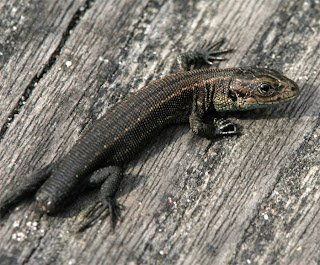batasan-singkat-dan-umum-autotomy-pada-reptil-T-REC semarang-komunitas-reptil- semarang
T-REC semarang-komunitas reptile semarang
http://animal-world.com/encyclo/reptiles/information/reptile_glossary.php
http://en.wikipedia.org/wiki/Autotomy
autotomy - Pelepasan dari bagian
tubuh hewan, biasanya untuk pertahanan diri .
Autotomy ekor umum
di banyak kadal.
Beberapa tokek , kadal , dan salamander yang ditangkap pada bagian ekor akan melepaskan bagian struktur ekor dan dengan demikian dapat melarikan diri . Ekor terpisah akan terus bergerak , dan mengalihkan perhatian predator nya . Hewan tersebut sebagian dapat me regenerasi ekornya , biasanya selama periode mingguan . Bagian baru akan berisi tulang rawan dari regenerasi tulang , dan umumnya regenerasi kulit organ berbeda jelas dalam warna dan tekstur dari tampilan awalnya . Istilah untuk kemampuan ini adalah caudal autotomy .
Caudal autotomy pada kadal dalam dua bentuk . bentuk pertama, disebut intervertebral autotomy, ekor putus antara tulang belakang / vertebrae . Bentuk kedua adalah intravertebral autotomy , di mana ada zona yang lemah / zones of weakness , patah / fracture di setiap tulang belakang / vertebra pada pertengahan-bagian ekor.
Teks asli :
autotomy - The voluntary shedding of the body parts of animals, usually in defense. Autotomy of the tail is common in many lizards.
Reptiles and amphibians
Some geckos,[2][3] skinks,[4][5][6] lizards[7][8][9] and salamanders[10][11][12] that are captured by the tail will shed part of the tail structure and thus be able to flee. The detached tail will continue to wriggle, creating a deceptive sense of continued struggle and distracting the predator's attention from the fleeing prey animal. The animal can partially regenerate its tail, typically over a period of weeks. The new section will contain cartilage rather than regenerating vertebrae of bone, and the skin of the regenerated organ generally differs distinctly in colour and texture from its original appearance. The technical term for this ability to drop the tail is caudal autotomy. In most lizards that sacrifice the tail in this manner, breakage occurs only when the tail is grasped with sufficient force, but some animals, such as some species of geckos, can perform true autotomy, throwing off the tail when sufficiently stressed, such as when attacked by ants.Caudal autotomy in lizards takes two forms. In the first form, called intervertebral autotomy, the tail breaks between the vertebrae. The second form of caudal autotomy is intravertebral autotomy, in which there are zones of weakness, fracture planes across each vertebra in the mid-part of the tail.







--klamathconservation+dot+org.jpg)














